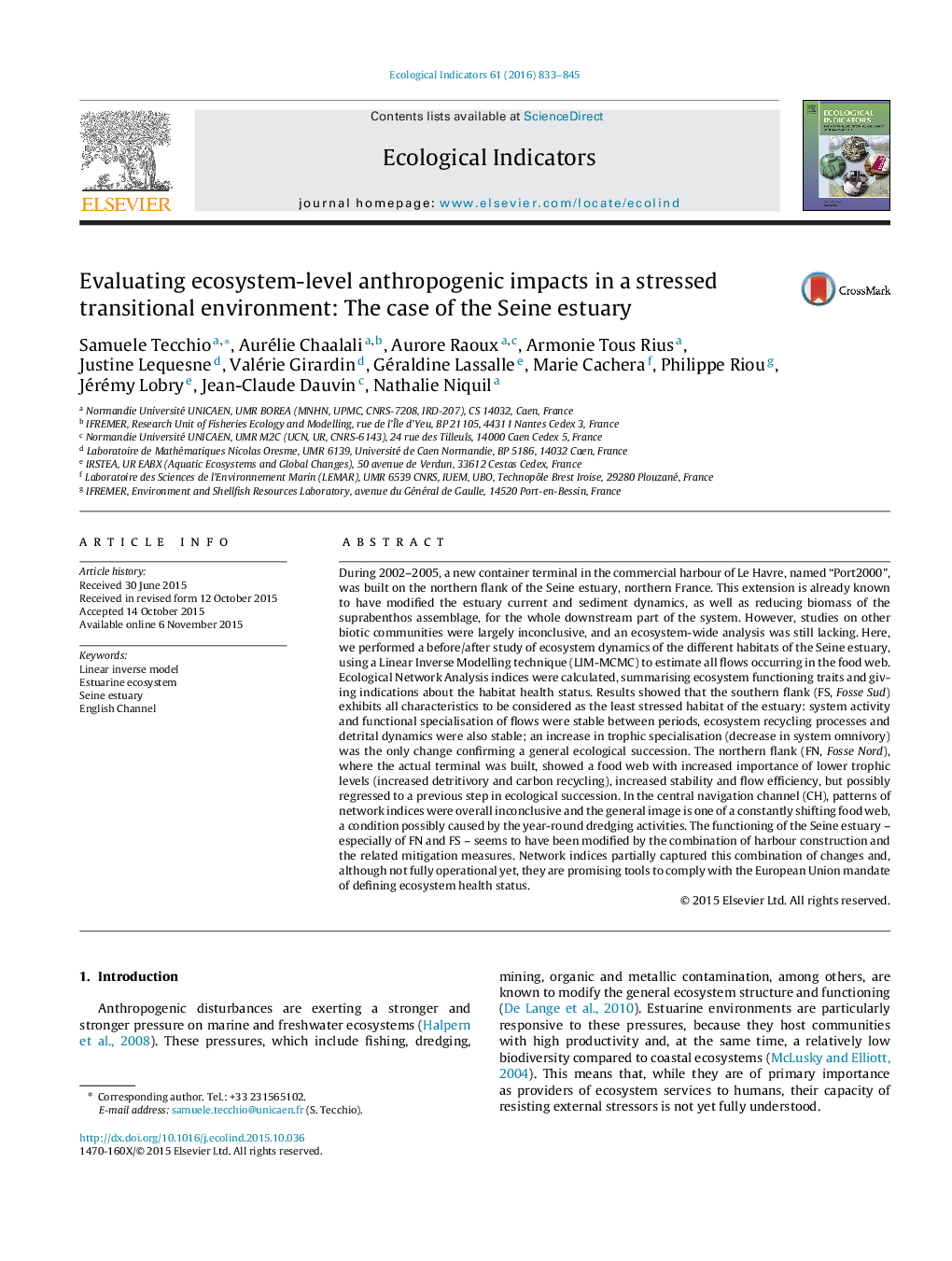| Article ID | Journal | Published Year | Pages | File Type |
|---|---|---|---|---|
| 6293731 | Ecological Indicators | 2016 | 13 Pages |
â¢Six food web models of the Seine estuary, before and after harbour extension works.â¢Ecological network analysis indices showed regression of stability in affected area.â¢Other least affected habitat showed specialisation and normal ecological succession.â¢ENA for ecosystem health indication is progressing towards operability.
During 2002-2005, a new container terminal in the commercial harbour of Le Havre, named “Port2000”, was built on the northern flank of the Seine estuary, northern France. This extension is already known to have modified the estuary current and sediment dynamics, as well as reducing biomass of the suprabenthos assemblage, for the whole downstream part of the system. However, studies on other biotic communities were largely inconclusive, and an ecosystem-wide analysis was still lacking. Here, we performed a before/after study of ecosystem dynamics of the different habitats of the Seine estuary, using a Linear Inverse Modelling technique (LIM-MCMC) to estimate all flows occurring in the food web. Ecological Network Analysis indices were calculated, summarising ecosystem functioning traits and giving indications about the habitat health status. Results showed that the southern flank (FS, Fosse Sud) exhibits all characteristics to be considered as the least stressed habitat of the estuary: system activity and functional specialisation of flows were stable between periods, ecosystem recycling processes and detrital dynamics were also stable; an increase in trophic specialisation (decrease in system omnivory) was the only change confirming a general ecological succession. The northern flank (FN, Fosse Nord), where the actual terminal was built, showed a food web with increased importance of lower trophic levels (increased detritivory and carbon recycling), increased stability and flow efficiency, but possibly regressed to a previous step in ecological succession. In the central navigation channel (CH), patterns of network indices were overall inconclusive and the general image is one of a constantly shifting food web, a condition possibly caused by the year-round dredging activities. The functioning of the Seine estuary - especially of FN and FS - seems to have been modified by the combination of harbour construction and the related mitigation measures. Network indices partially captured this combination of changes and, although not fully operational yet, they are promising tools to comply with the European Union mandate of defining ecosystem health status.
